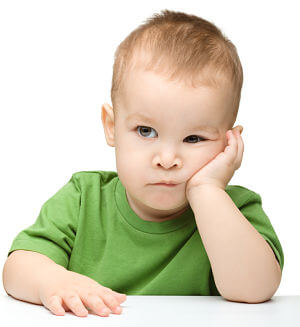Diaper Rash and Baby Food – Foods to Avoid and Tips to Help Baby Feel Better!
It’s really heart-breaking when diaper rash causes the skin on your little one’s bottom to become red and angry, causing HIM great discomfort and making diaper-changing time miserable for you both.
There are many possible reasons why your little one may experience diaper/nappy rash, including…
- switching diaper or baby wipe brands (particularly if you switch to a brand containing lots of dye or perfume)
- teething (our doctor always told us that teething does NOT cause nappy rash, but I’m afraid that our little ones would have to disagree!)
- fungal/yeast infection
- chafing from the diaper
- antibiotics – many parents notice a diaper rash when their babies are given antibiotics, although this can sometimes be prevented by giving baby yogurt (when appropriate) to replenish the helpful bacteria in the gut
However, one of the most common causes of diaper rash in babies from around 4-6 months onwards is the introduction of solid foods… and certain foods in particular.
If your little one is suffering from a diaper rash – and you are fairly certain that none of the above causes are responsible – then it’s time to take a look at his diet.
Please note: You should have the rash checked out by a doctor if you are unsure of its cause, particularly if it is very severe or persistent/worsening.
It is particularly important to consult a medical professional if the rash involves any boils/blisters, spreads beyond the diaper area, discharges pus, or is accompanied by a fever.
When your little one starts solid foods for the first time, the texture and composition of his stools changes. So may the frequency with which he passes them. These factors alone can trigger a rash in some babies.
Acidic foods are very often the culprits when nappy rash appears. Common acidic foods (which you may wish to exclude from his diet should a rash develop) include
- citrus fruits and juices (it is usually recommended that you avoid these for AT LEAST the first year anyway)
- tomatoes and tomato-based products (this includes foods like spaghetti sauce)
- strawberries
- pineapple
- particularly tart apples, plums and peaches
- grapes
- raisins
Nappy rash can also be caused by a sensitivity to the protein in certain foods such as
- wheat
- dairy
- soy
- legumes/beans
In some cases, sensitivity to certain foods may cause a red circle around the anus rather than a more widespread rash across the cheeks of your baby’s bottom.
This may indicate a food allergy, although not ALL diaper rashes as a response to certain foods indicate a true allergy… it may simply be that your baby’s digestive system is unable to cope with those particular foods at that time.
You should, of course, consult your doctor if you ever suspect that your baby is experiencing an allergic reaction to a particular food.
Because diaper rash may be triggered by frequent, loose stools, it is a good idea to avoid the foods that cause diarrhea, such as
- cow’s milk-based formula
- dairy products (except for yogurt)
- apple juice
- pear juice
- cherry juice
- apricots
- peaches
- pears
- peas
- apricots
- prunes
- plums
Other foods that may cause nappy rash include wheat cereals such as Cream of Wheat and Weetabix – and foods containing artificial sweeteners (another good reason to avoid those!).
Tips for avoiding nappy rash as you introduce solids to your baby…
- Introduce new foods following the four day rule. If a food gives your baby diaper rash, then you will know immediately which food it is!
- Introduce new foods to baby a little at a time. This may help minimize the severity of the reaction.
- Don’t introduce any new foods whilst your baby is suffering from an existing bout of diaper rash. You could end up making the problem worse.
- Keep a food diary as you introduce new foods, helping you keep track of just what was introduced… and when.
- If a particular food DOES trigger a diaper rash – but there are no other signs of allergy and the reaction is minor – try re-introducing the food a few weeks later. If the reaction is severe – or if there are other signs of allergy – then be sure to consult your doctor before re-introducing that particular food.
If you are breastfeeding your baby…
…and he has persistent diaper rash despite eliminating the problem foods mentioned in the lists above, it’s worth looking to your OWN diet. It may be that your baby is reacting to those foods as they pass to him through your breast milk.
Three good ways to help clear your baby’s nappy rash
- Expose his sore bottom to the air as often as possible. It really does make a huge difference to the time it takes the rash to heal.
- Use a suitable barrier or diaper rash cream .
- If you’re breastfeeding, try applying breast milk directly to baby’s bottom! Sounds strange? Breastmilk is very versatile and many Mummies (us included) swear by this method!
Useful link for more information – Diaper Rash – by the MayoClinic.com


